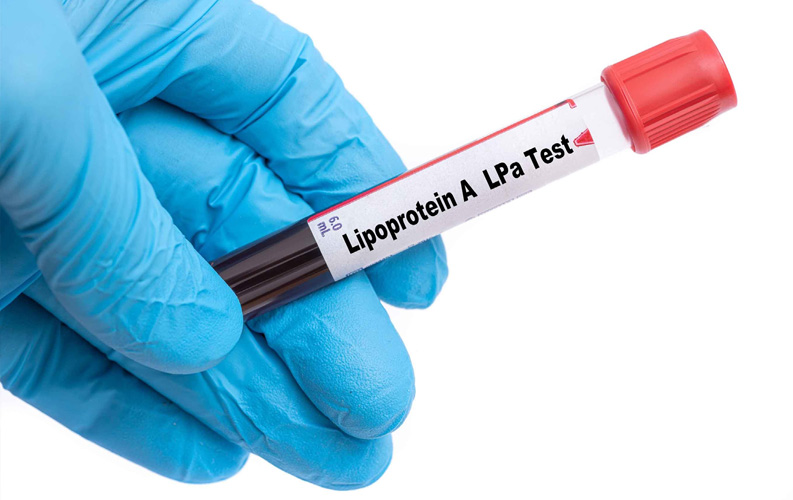
Lipoprotein(a): New kid on the block, or a well-known foe?
Our commitment to comprehensive cardiovascular care has been steadfast for more than 20 years; this includes evidence-based genetic testing. One genetic test garnering recent public attention is lipoprotein(a), an inherited lipid disorder affecting around 23% of the population. Though it is just now showing up in the mainstream media, Lipoprotein(a) is nothing new for Bale Doneen providers. The Bale Doneen Method has recommended Lp(a) testing for more than two decades. In other words, if you have been a patient in our program, your lipoprotein(a) level has been tested — and if abnormal, has been treated appropriately.
Considering recent direct-to-consumer marketing of new pharmaceutical treatments on the horizon, it is essential to dive further into this subject and to clarify misconceptions while emphasizing the long-standing awareness and management we have undertaken regarding this condition.
What is Lipoprotein(a)?
Lipoprotein(a), or Lp(a), consists of a cholesterol particle bound to a unique protein called apolipoprotein(a). This lipid compound significantly increases the risk for early and aggressive atherosclerotic disease, including coronary artery (heart) disease and aortic valve calcification. Unlike other lipoproteins, Lp(a) is inherited from one or both parents, creating family histories littered with tales of heart attacks and strokes in young, otherwise healthy individuals. Because lipoprotein(a) is a genetic marker, if your level is within normal limits, it never needs to be tested again.
Our Pioneering Approach: Long-Standing Awareness and Proactive Treatment.
Contrary to the misconceptions created by recent marketing campaigns, Lp(a) is far from a new discovery. Experts in the field of lipidology and preventive cardiology have long recommended Lipoprotein(a) be tested once in all adults for risk stratification: an approach supported by an abundance or scientific evidence. For example, a collection of 2009 genetic studies proved that Lp(a) elevation was a causative factor in acute coronary events, and a 2014 study showed that Lp(a) elevation enhanced cardiovascular risk and suggested reclassification of up to 40% of previously intermediate risk individuals. In addition, the 2022 European Consensus statement on Lp(a) states that Lp(a) should be measured at least once in adults; that interpretation of Lp(a) should impact overall CVD risk category; and that more intensified treatment may be warranted based on a positive result. In short, it is not new, and it is a big deal.
For more than 2 decades the Bale Doneen Method has followed the growing body of evidence that Lp(a) elevation is a major player in early, aggressive arterial disease. Studies conducted by Willeit et al. (2014, 2018) and Lange et al. (2016) underscore the significance of baseline Lp(a) levels in predicting both initial and recurrent cardiovascular events, reiterating the critical role of a proactive approach to cardiovascular disease prevention. We are proud to have long offered this individualized care to our patients treated under the Bale Doneen Method and will continue to seek out the most robust evidence for the treatment of this disorder.
Treatment: Current and Future
Currently, the only approved treatment for Lp(a) elevation is Vitamin B3, or Niacin. Niacin has been used for more than 50 years to reduce cardiovascular events and mortality and is known to lower lipoprotein(a) concentration by silencing the Apo(a) gene expression in the liver cells. The effect of Niacin is dose-dependent, leading to a 25-38% reduction in Lp(a) concentration when administered at a dose of 2-4 grams daily. Vitamin B3 has been a mainstay of treatment within The Bale Doneen Method, and we will continue to utilize this powerful tool until we have something safe and superior to offer our patients.
Recent media attention and direct-to-consumer marketing has stemmed from the development of a new class of medications aimed at eliminating the increased cardiovascular risk posed by lipoprotein(a) elevation, Antisense Oligonucliotides (ASOs). ASOs are designed to inhibit Apo(a) mRNA and preliminary study results show an impressive reduction in Lp(a) (up to 90%). However, these drugs remain in the human trial phase with no published data on CV event or aortic valve disease reduction.
While we always welcome and appreciate any public health campaign highlighting the importance of a proactive and genetically driven approach to cardiovascular care, we recognize that the emergence of new pharmaceuticals is largely driving this messaging. As we start to hear more and more directed at consumers, we urge you to remember that we are aware of the new developments and will continue to share what we learn about these new treatments — and will be the first to discuss a treatment change if the data robustly supports their use and safety.
At The Prevention Center, our dedication to proactive health care encompasses early identification, continual monitoring and effective management of lipoprotein(a) and related risk. We strive to always remain up to date with new advancements in treatment and are committed to ensuring our patients receive the very best comprehensive and personalized care.
